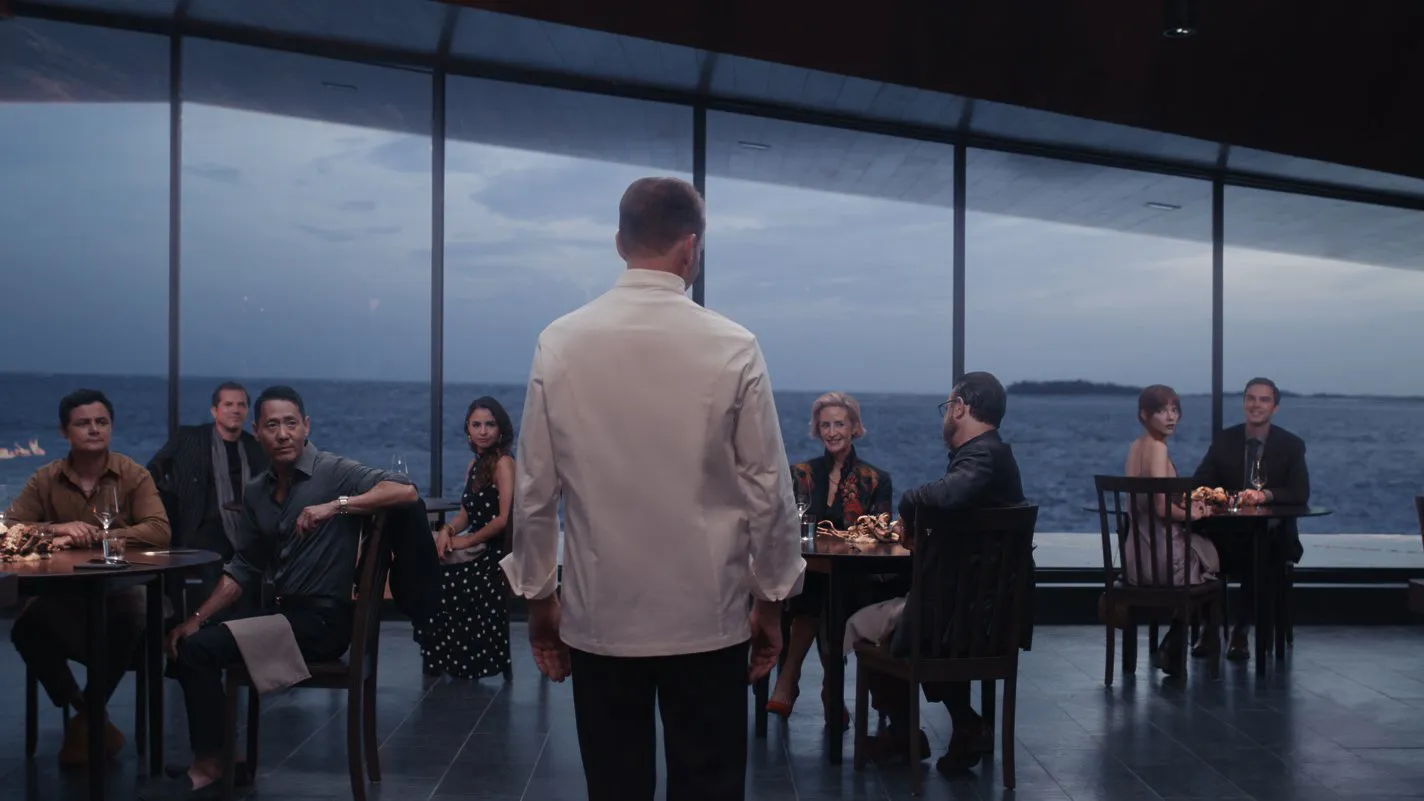Table of Contents Show
Ready to eat a multicourse meal that includes a manhunt on a private island, a bread plate with no bread, and undercooked lamb and leeks? Then The Menu (Mylod, 2022) won’t disappoint.
The movie follows diners at an elusive and exclusive restaurant on a private island, headed by world-renowned Chef Julian Slowik (Ralph Fiennes). But this isn’t like any MICHELIN Star restaurant you’ve seen before. The diners are given a unique experience with a set of courses they won’t see again for a cost few can afford. Usually, that means they get to head home to share their thoughts with friends and family. This time is different.
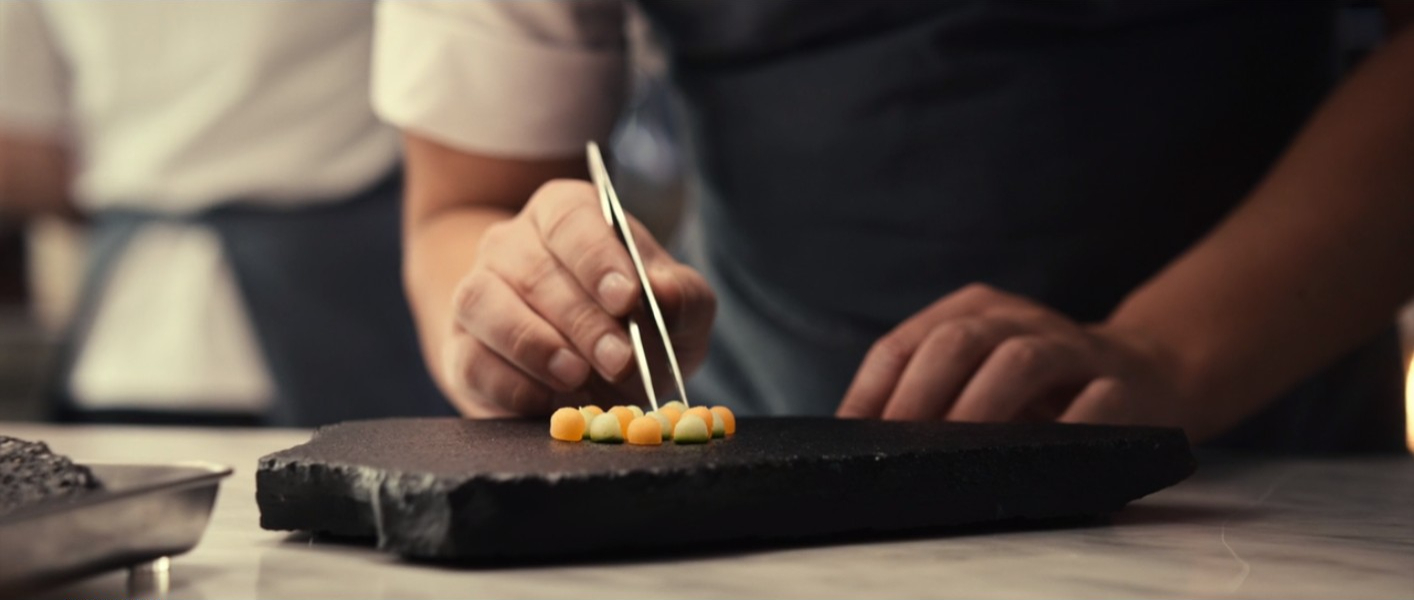
Audiences watch on as what starts as a fairly normal meal turns into something sinister when a sous chef takes his own life in front of them as part of the menu. The night continues to spiral as Chef Slowik makes it clear everyone there was handpicked to experience the nightmare he’s created. As the plot moves along, it’s clear The Menu is commenting on capitalism, culture, and privilege, and it doesn’t hide that. In fact, it screams it with every step the characters take.
However, hidden not quite underneath the surface is an additional story that should be examined. While the movie community is focused on the meaning that can be extrapolated from The Menu, we should be paying attention to the cult mentality at play and how it impacts Anya Taylor Joy’s Margot over the course of 106 minutes. The movie wants audiences to focus on the social commentary, which is certainly at the front of a viewer’s mind, realizing the dynamic of the group that lives on Hawthorn adds an additional layer of meaning to The Menu.
The Characteristics Of A Cult
In order to analyze the cultism of The Menu, we first need to establish the characteristics that are used to define a group of people as a cult. Michael D. Langone, Ph.D., an American psychologist who has devoted his life to researching cults created a detailed list of questions someone should ask when considering if a group is a cult. In the most recent version of this list, as published by the International Cultic Studies Association (ICSA), there are fifteen factors to consider(( Langone, Michael. “Characteristics Associated with Cultic Groups – Revised.” ICSA, 2015. )).
The behavior and actions of those that live on the island and work at Hawthorn will be compared to the criteria created by Dr. Langone to determine if elements of a cult are present within the group and, if so, how many boxes Hawthorn checks.
Life On The Island
As audiences are introduced to Hawthorn, we discover it is on a private island. A special boat has to be arranged, and it isn’t a place you can go to on a whim. As the diners are given a tour of the island on the way to the restaurant, they are shown the kitchen staff’s common living area. Everyone who works for Hawthorn, other than Chef Slowik, sleeps in a building with a domed roof, identical single beds covered in white sheets, and presumably a locker to call their own based on the two banks of lockers in the back of the room.
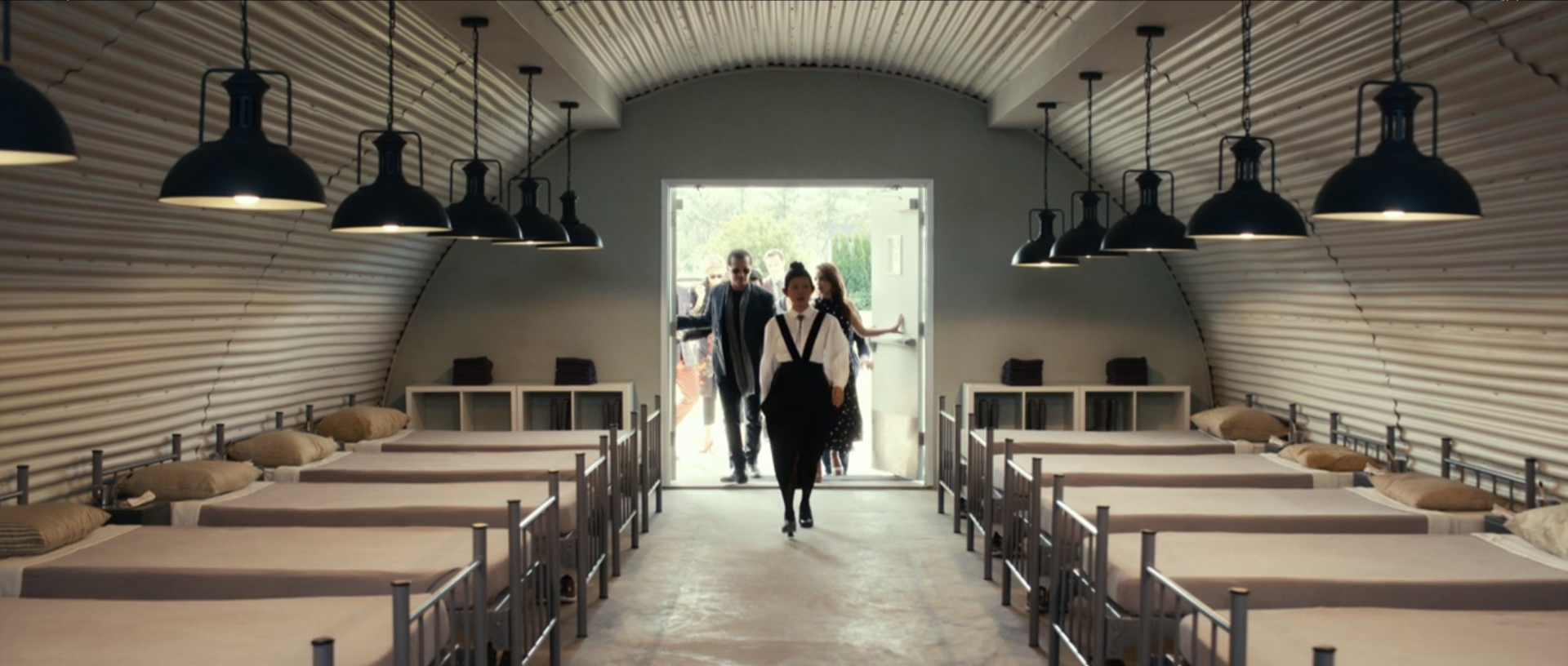
In Dr. Langone’s criteria, he says to consider if members of the group “are encouraged or required to live and/or socialize only with other group members.” It’s clear that, even if it is something they are willing to do as one of his employees, they are all required to live together in this single-roomed building. They lack basic privacy not just while sleeping, but relieving themselves and showering as well, as there are no shower curtains or privacy barriers around the toilets in the room. They also all have the same style of toothbrush and cup on their nightstands, adding to the uniformity of their living arrangements.
In agreeing to live on the island and work for Chef Slowik, people agree to certain terms. Every day they do five hours of prep work for the restaurant, which can include harvesting, preparing meat, and other tasks depending on the menu being served. While it isn’t overtly said that Chef Slowik requires this of them, it’s clear that in agreeing to come to Hawthorn you are agreeing to the schedule they hold. Another question Dr. Langone asks is if the leadership of the group, in this case, Chef Slowik, “dictates, sometimes in great detail, how members should think, act, and feel.” He is dictating their schedule, and what they do, as the tasks they have to carry out directly relate to the menu he plans.
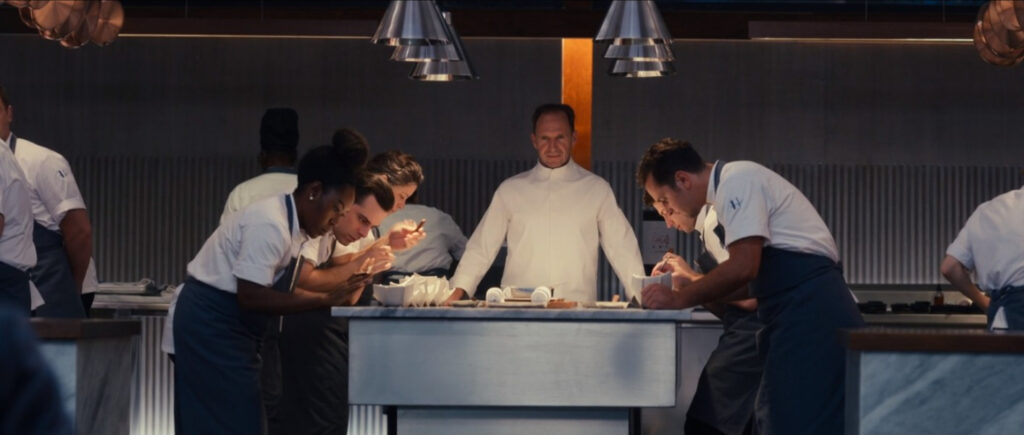
Not only is he determining what they do, but what he requires demands an excessive amount of time from his staff. As Elsa (Hong Chau) guides the diners around, she notes that they wake up at 6:00 AM, do their five hours of prep work, help with a 4.5-hour long meal and that they aren’t in bed again until after 2:00 AM. Expecting his staff to spend that type of time on activities that contribute to the group is another characteristic as described by Dr. Langone.
While it certainly isn’t clear if Chef Slowik is preventing his staff from communicating with their friends or family, as is a characteristic of cults, with how their days are divided, it doesn’t appear as though they have time to talk to their loved ones even if they wanted or were allowed to. This then, by default, could be argued as fulfilling one of Dr. Langone’s defined characteristics.
Commitment To Leadership
Dr. Langone’s criteria include a question asking if the group’s members have an “unquestioning commitment to the group’s leader. Throughout The Menu, the staff’s commitment to Chef Slowik is unwavering. They don’t hesitate to chase after the male guests when he tells them to, don’t try to save themselves when it’s time for the final course to begin, and help him ensure the guests remain in the restaurant until the end.
As viewers move through the meal with the diners, the fourth course shows his staff’s dedication and commitment to him. Sous chef Jeremy (Adam Aalderks) designed the course, one which involves taking his own life before a plate of protein is served to guests. It takes a level of commitment for someone to be willing to commit such an act, especially once it’s revealed that everyone, including Chef Slowik and his staff, will perish at the end of the night. Rather than wait out his fate, Jeremy was willing to develop a course for his leader that would create the ultimate impact.
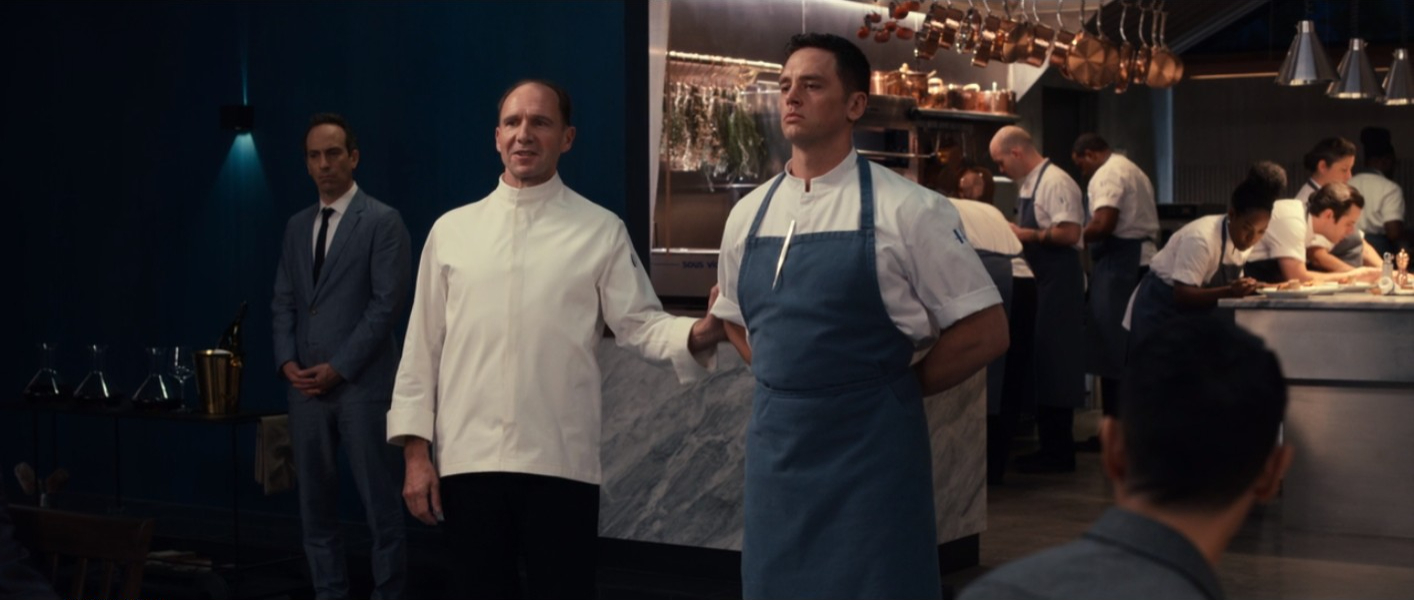
In having Jeremy create a course of this nature, Chef Slowik is utilizing a level of shame against him. The chef says that Jeremy will never achieve his goal of being excellent, and Jeremy agrees with his mentor. While he is a “good” sous chef, he will never be “great.” This level of shame is used to justify Jeremy’s actions in creating his course on the menu. While it isn’t stated, it is implied that this shame of never reaching the level of greatness he wanted was used against Jeremy while Chef Slowik and his staff were developing the menu. Dr. Langone’s questions include asking if “leadership induces feelings of shame and/or guilt in order to influence and/or control members,” which seems to be exactly what happened to Jeremy.
The Status Of Hawthorn
The creation of Hawthorn and the dining experience are elitist in nature. Chef Slowik has the ability to create such an experience, and charge the high price he does, because he has been elevated to such a status within the culinary world, thanks in part to his original critic. While Dr. Langone’s questions ask if the group “claim[s] a special, exalted status for itself, its leader(s), and its members,” Hawthorn doesn’t have to; that status has been awarded to them by the outside world.
This status affords Chef Slowik certain privileges. In being on a private island, he is able to commit acts that can go unnoticed in a way that wouldn’t happen if his restaurant was in the middle of a city. When Margot uses a radio to call for help, and a member of the Coast Guard comes, it appears as though the diners are saved. However, it is later revealed that this individual is only an actor pretending to be with the Coast Guard, hired by Chef Slowik as part of the evening’s show. Not being accountable to authority is part of Dr. Langone’s criteria, and is in effect here. The chef’s power has a reach such that he can have someone impersonate a member of the United States Armed Forces on a private island with no way to communicate with the mainland. He has created the perfect environment to circumvent the authorities and continue his work under the illusion his status provides.
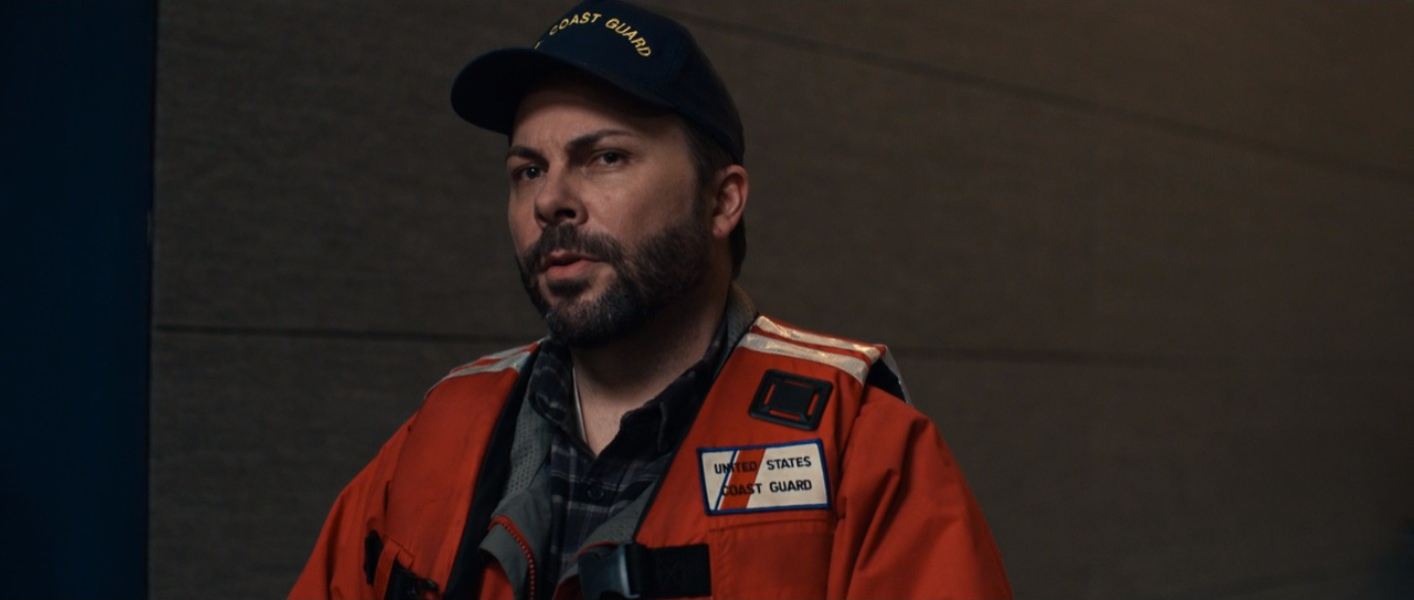
In developing this environment, Chef Slowik has also justified his actions. “The group teaches or implies that its supposedly exalted ends justify whatever means it deems necessary.” This part of Dr. Langone’s criteria is evident in how the chef defends his decision and plan to kill all of the diners. He justifies his actions because of who they are and their impact on his life. He has his staff justify these actions. The other half of this part of the criteria is that, in condoning these actions, they may be doing something they wouldn’t have ethically done before. Helping plan the death of an entire group of people is not something that many consider ethically sound. Many would not think that taking their life as part of a menu is ethically sound.
The Us Versus Them Mentality
While Chef Slowik has planned this evening to a T, from the courses to who was there to eat them, Margot wasn’t a part of his plan. Tyler (Nicholas Hoult) was meant to bring a different woman, but their falling out caused him to hire Margot to bring instead. The chef handpicked everyone there due to a slight against him in some way, from the reviewer that helped kickstart his career to an actor that starred in a film the chef didn’t like. Everyone there had a purpose.
Margot put a wrench in that plan. She is not a part of the menu chef created. This causes him to offer her something different than the other diners: the chance to stand with the kitchen staff at the end of the evening and die as one of them, rather than as one of the elite. Chef Slowik recognizes that she doesn’t live a life like those she’s dining with, that her life is more like that of his and the kitchen staff.
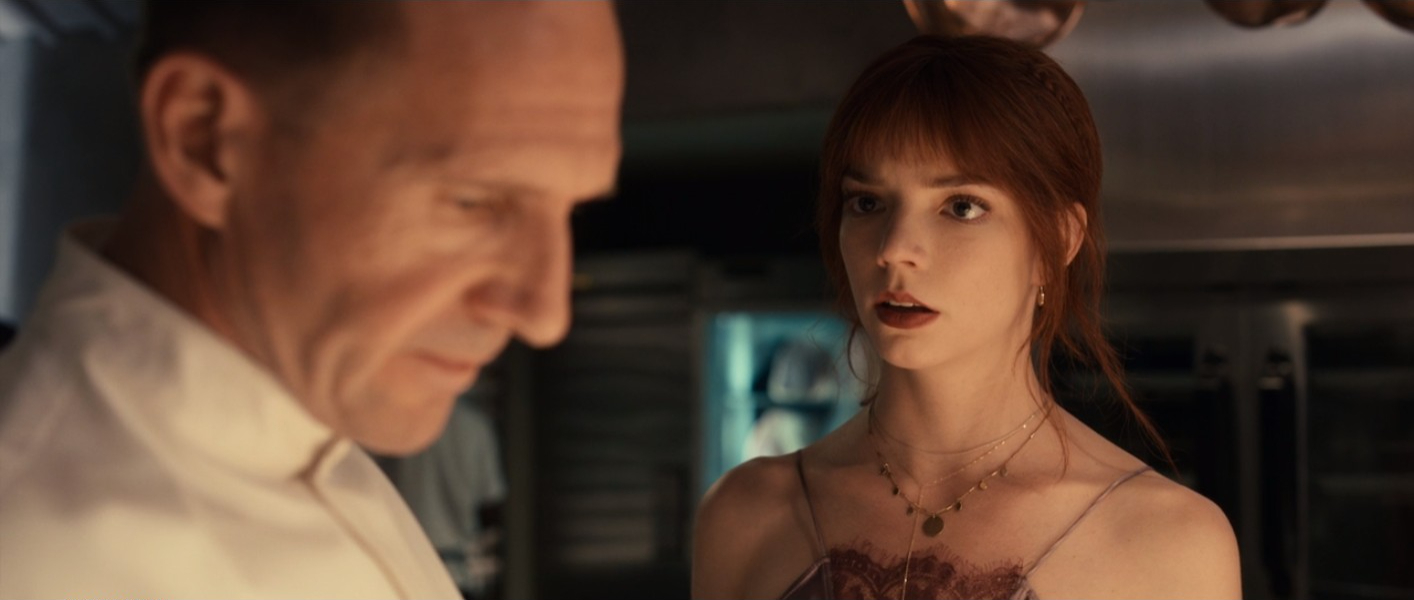
However, she doesn’t have long to decide. She is given fifteen minutes, complete with a timer on the table she’s sharing with Tyler, to make her decision. When she doesn’t make a choice, the chef decides for her, noting that he can tell she’s a “service industry worker” just like him and his staff. Chef Slowik has walked right into one of the questions posed by Dr. Langone.
Part of determining if a group is a cult is determining if there is “a polarized us-versus-them mentality, which may cause conflict with the wider society.” The chef has created this when he asks Margot to choose who to stand with. He makes it clear that the group he’s created will always go against the upper echelons of society. There will always be a divide between the two.
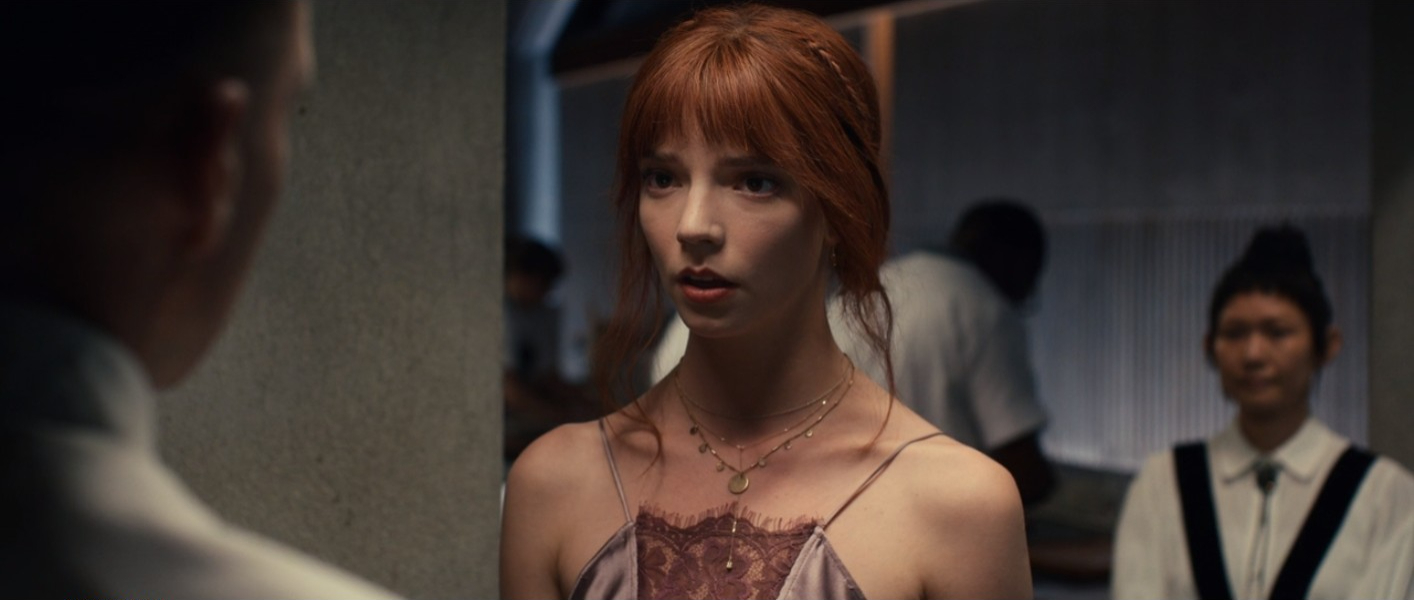
This divide goes even further, with Elsa trying to create it with Margot. Chef Slowik’s dutiful follower is jealous of the attention he pays to Margot that evening. She’s upset that he claims he asked Elsa to retrieve a barrel so he can send Margot on a task, helping to reinforce that Margot is one of them. In Elsa’s mind, though the chef has accepted Margot as one of them, she has not. She goes so far as to attack Margot, attempting to remove her from the situation so Elsa can reclaim her place within the hierarchy and ensure her vision of “us” is maintained.
The Cult Of Hawthorn
Comparing The Menu to the characteristics of cults introduces an interesting dynamic. While there is no cut-and-dry evidence of certain parts of Dr. Langone’s criteria, such as the use of “mind-altering practices” or their main goal is to make money, Chef Slowik’s environment in Hawthorn embodies ten of the fifteen questions posed by Dr. Langone.
With that in mind, we can’t in good faith say that Hawthorn is or isn’t a cult. That isn’t our place. What we can say is that, based on the image of Hawthorn shown to audiences in The Menu, the group exhibits many of the characteristics present in cults today.
This revelation introduces a new level of intricacy and understanding to The Menu. Rather than just pose common questions movies that venture into social commentary do, The Menu introduces a dynamic that isn’t centered because the audience is too focused on the commentary at hand. This causes the cult-like nature to hide in plain sight, adding to the ominous nature of The Menu. Even if viewers acknowledge it, it is swept out of their minds as the evening’s events unfold. Which, is Chef Slowik’s plan in the first place.
